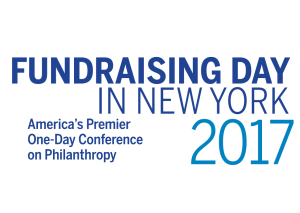Travelers picked coffee in the Guatemalan highlands, benefiting local Tzutujil Maya communities.
The San Francisco Court Appointed Special Advocate (SF-CASA) needed a quick infusion of cash. The young nonprofit targeted donors who had given more than $500 with a mailing that offered a round-trip travel certificate to anywhere in the United States.
SF-CASA netted some $45,000, a good haul for a group with an annual budget of only $1.25 million. “It was a real indicator to us, not only of how well it worked at that moment in time, and quickly, but also showed us there was a great interest in travel incentives,” said Caroline Fisher, executive director.
Travel has become one way that Fisher and her organization try to draw attention to the cause. Another way to get attention is to have events, she said, providing people with new and unique opportunities to “support our work and get something back,” such as auctions and travel items. “That’s not because people are self-serving. It really is a way to get their attention,” she said. The key fundraising adage, after all, is that people do not give most of the time because they are not asked.
“For organizations that provide services to specifically-targeted populations, we have an extra amount of work” to attract and keep donors, Fisher said. Unless they’ve had an issue with the children’s welfare system, such as being adopted, she said, people are unaware of the issues children face in foster care.
In addition to getting people’s attention, travel can be used as a prospecting tool, as in the case of SF-CASA. With the mailing, SF-CASA was able to identify people who can make large, quick donations and performed prospecting for who is capable of giving more money, said Michelle Cohen, president of Mitch-Stuart Inc., a firm that arranges travel for charities.
Cohen also sees travel incentives as a “wonderful attraction” for younger donors. Events used to be the way to go. “With attrition of donors, nonprofits are always looking for younger donors. This is a big attraction, and nonprofits are very interested. Travel is way more popular than items,” she said.
“We’re a reward-oriented society,” said Stuart Paskow, chief executive officer of Mitch-Stuart Inc., which works with thousands of nonprofits to offer hotel and travel incentives in the U.S. and worldwide from offices in Florida and California. “More and more young people, with more leisure time and income, want to get something in return for giving to charity. It’s not as altruistic as it once was.”
In addition to donors getting excited, Fisher said travel engages board members, as well as the people running events. “It’s easy and not work intensive,” she said, which helps when encountering donor or board fatigue. In years past, SF-CASA’s most exotic trip was to New York City, by borrowing someone’s condo, or a trip to Italy using miles that required stops. “This (incentives) took it to another level,” she said, adding that SF-CASA plans to develop an online fundraising initiative for travel incentives during 2008.
Fisher estimated that her organization has increased individual gifts by 20 percent during the past two years by using travel incentives, as well as projecting a 10-percent jump for 2007 in the number of people attending their events.
“Before we were using packages to attract donors. Early on we did some testing with direct mail incentives,” Fisher said. “What we were doing was using direct mail to attract donors by saying, make a gift and we’ll give you a mile per dollar, or at a certain level we’ll double that…It’s great for the agency because it makes us look very big time…It projects a certain image for us at events that we do have at some fancy locations,” Fisher said.
Bidding for Brazil Travel items generate the most revenue for any type of nonprofit’s auction, whether it’s healthcare, the arts or schools, according to Jon Carson, CEO of cMarket in Cambridge, Mass., an online auction fundraising company that has compiled data on more than 3,000 auctions. In 2007, charities auctioned more than $9 million in travel items through cMarket, which received 32 percent more bids than nontravel items during that time. The highest average auction price ($1,337) was within the arts and humanities.
Travel is “consistently the biggest revenue generator,” Carson said, though there are some differences in certain categories. In higher education, travel items are No. 1 in units sold, but only eighth among K-12 auctions, which generally have a few big gifts and lots of smaller ones. The opposite is true for higher education, which has more higher-end items.
Auctions are run one of two ways, either in conjunction with a gala event or purely online. “When they run them with gala events, they’re more likely to take travel items into the live event,” Carson said. The most popular items are four-day, three-night trips, with locations varying depending on where the nonprofit is located, he said. In the Midwest, Chicago is most popular, while New York City is the most popular in the Northeast, and Washington, D.C. in the Mid-Atlantic region.
Higher-end trips to destinations like Europe and South Africa are more typically found in the arts/humanities auctions, Carson said, though Europe is off by about 15 percent this fall as compared to last year.
Paskow said foreign travel has increased, but domestic travel hasn’t decreased. “It’s just a question of more people traveling, period, now,” he said.
After the September 11 terrorist attacks, nobody wanted to go to Europe, Paskow said, with everyone clamoring for Hawaii instead. Now it’s transitioned, with Italy, Paris and London being very popular.
Boston-based Elderhostel, which offers group educational travel to people 55 and older, reports a significant increase in domestic North American programs but no corresponding decrease in international programs.
Elderhostel President Jim Moses said there were approximately 7,000 additional participants in North American programs during 2007, bringing the total to about 120,000 participants. International programs stayed at about 20,000.
“Programming that we do internationally, that also is up. Everything is up,” Moses said. “I’m sure it is related to the weak dollar. The U.S. is on sale right now as far as everyone else is concerned.”
Regions that are most appealing continue to be Southern and Western Europe in general, the largest destination for Elderhostel programs, followed closely by Mexico and Central America, he said.
“Since 9/11, things have been pretty hard for everyone in the industry. But things have definitely picked up in recent years,” Moses said. Demographics also are shifting, particularly for Elderhostel. “The traditional person in our programs is now well into their 80s,” he said, with a new wave of Baby Boomers joining the demographics.
“What we’ve been seeing is younger participants want to be away from home for shorter periods, I think because they’re working,” Moses said. It used to be an international program might run three weeks, but now runs closer to 12 days.
What’s unique about Elderhostel is that it enters into foreign currency contracts at least a year in advance, Moses said. “We’re hedging our risk in shifts in the dollars,” he said, as the trips are usually all-inclusive. “Because we’re pricing so far in advance, and including everything, people who go into programs don’t have much risk. There’s not much out-of-pocket expense when they get there.”
Emerald Planet, in Fort Collins, Colo., handles trips for The Nature Conservancy, National Wildlife Federation and other conservation groups that aim to give donors a more engaged, first-hand look at their efforts. They’re seeing a boom in the number of European travelers to Latin America. “Generally speaking it’s an affordable region, but for Europeans, it’s a really affordable destination,” said Mark Willuhn, founder of Emerald Planet and executive director of the Mesoamerican Ecotourism Alliance, a nonprofit with 20 members in six nations.
With the cost of travel increasing due to the cost of fuel and other measures implemented by airlines, travel has become a better reward, one that sparks more interest, SF-CASA’s Fisher said. “It really makes it a better value now and I think people always want a good value.” NPT












